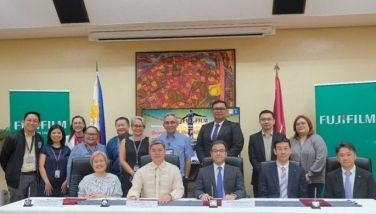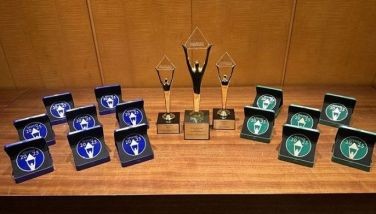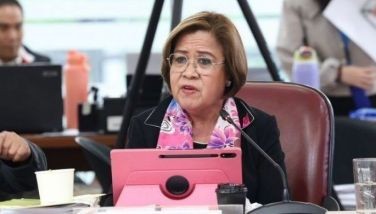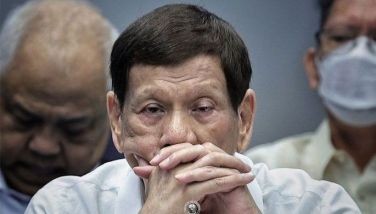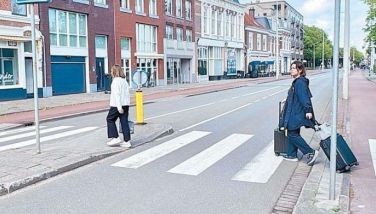De Lima’s dilemma
Technically speaking, just like Mar Roxas, Secretary de Lima should have resigned when she declared her intention to run for senator. Her problem is that to do so now would just increase the perception that she buckled under pressure of the INC power. This, in a nutshell, is the dilemma of Leila de Lima. She already said “trabaho lang ito” but Malacañang has also said it is taking a hands-off position regarding the issue. Both Jojo Binay and Grace Poe have called on De Lima to face up to the allegations that she is being biased against the religious sect – focusing on what is deemed by the religious group as an essentially internal problem while conveniently overlooking bigger issues like the January 25 Mamasapano massacre.
The Iglesia ni Cristo is considered to be a powerful political force reportedly with a four-million command vote. Many politicians recognize the major role the religious sect can play in politics. There is no question the current situation will have ramifications on Secretary De Lima’s senatorial bid including Mar Roxas’ presidential bid.
The DOJ Secretary has crossed swords with a number of powerful politicians like Ping Lacson, Mayor Roddy Duterte and recently Senator Juan Ponce Enrile. Duterte, who is a friend of Mar Roxas, declared he will campaign against the latter if Leila de Lima is included in the LP senatorial ticket. That is, if he does not run for president himself.
A dialogue with the INC leadership is warranted if the administration does not want the issue to escalate further. After all, even the Catholic Church has also resorted to protest actions to elevate the attention of the government and the people on certain issues, so “what right does the DOJ Secretary have in depriving the INC of its right to peaceful assembly?” a friend from the INC leadership told me.
Hysterical over traffic
The traffic mess has been the subject of discussion, social media interaction, debates and fulmination this whole week, and it seems the issue is not about to die down. A week after we came out with our column titled “Metro Manila traffic already ‘fatal’,” we continue to receive a lot of feedback and irate emails bordering on hysterical anger as well as some suggestions on how we can all contribute in solving the escalating traffic in Metro Manila. I think we should all calm down a bit and direct our energy into helping the government solve this ‘fatal’ problem.
We totally understand the anger of commuters most especially when government officials dismiss the traffic as not fatal, being totally insensitive and showing lack of empathy for the daily suffering of Filipinos sweating under the heat of the sun or stoically enduring the rain so they don’t lose their place in the kilometric line going up to the MRT platforms.
The oft-repeated appeal for people to be patient, with the president saying the government is studying several proposals to ease the congestion – only adds to frustration with people like our friend, broadcaster Ted Failon, saying it’s been five years since this administration came into power and they’re still studying how to manage this gargantuan problem. Frustration levels are increasing, with people developing a “fatal mentality” against certain administration officials perceived as insensitive and incompetent.
Take for instance the seven kilometer NAIA Expressway project whose completion date has been repeatedly adjusted until finally, DMCI, the winning contractor, admitted that work will not be completed in time for the Asia Pacific Economic Cooperation Leaders’ Summit this November – simply because the government failed to secure the right of way requirements, pushing the completion date to April 2016. Clearly, this is a lack of foresight.
Filipinos end up “paying not once, but twice,” for all these delayed projects – first from taxes used to finance these projects, and second from lost business opportunities, medical expenses (UTI, asthma, high blood pressure, etc.) and other economic costs that can be attributed to traffic. But let’s face the problem squarely since the government seems to be helpless in solving the traffic situation. Let’s step back, relax and take a deep breath and see what we can do to help ease the situation, to be part of the solution instead of adding to the problem.
Some suggested taking out the bus terminals along EDSA and transferring them to a common depot in both the north and south outskirts of Metro Manila; still another wants malls located along EDSA to stop holding mammoth sales at the same time. One proposal is to regulate the number of cars passing major roads at certain times of the day, prioritizing vehicles with four or more passengers.
The president has proposed reviving the odd-even number scheme (since obviously the number coding scheme is not working) but many criticize it as a short-term solution that will ultimately result in more vehicles. As always, the problem is that most people will not voluntarily deprive themselves of the use of their car.
Big organizations like the Chamber of Real Estate Builders Association where I was asked to speak at their annual meeting (see photos at the Allure section today) can certainly play a major role in the long term to help ease congestion in major cities. I suggested focusing on developments and bringing more work opportunities outside of Metro Manila. According to the World Bank, the population in Metro Manila has reached 16.5 million as of 2010, and this number is now at 22.7 million according to Illinois-based Demographia – giving us an idea about the kind of congestion that we are facing today and will continue to face in the future.
* * *
Email: babeseyeview@gmail.com
- Latest
- Trending










